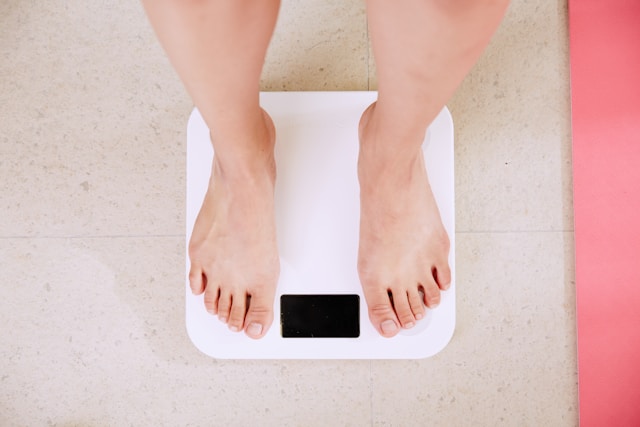Health
How to Start Eating Healthy Without Noticing

Have you tried fad diet after fad diet with no success? If you have been trying to lose weight or just eat healthier in general, a simple yet effective approach includes the following tips to sustain healthier eating habits.
Have Healthy Foods Nearby
Do you ever wander into the kitchen for a quick snack and immediately head to your snack cabinet? Well, you certainly aren’t the only one. First, you will want to ensure you are placing healthier snacks and foods in eyesight, on the counter top, or in the main places you always seem to go looking for a snack.
Eliminate the Junk Food
If you have limited amounts of junk food or no junk food at all in your home, it’ll be a little easier to not be tempted by it. Opt to eliminate or significantly reduce the amount of unhealthy options you have in your pantry and fridge and replace them with healthier options that you will feel less guilty about.
Drink More Water
Focusing on increasing your intake of water is not only good for your body’s hydration but it can also help reduce mindless eating. When you begin to crave a sweet treat or have the urge to snack even though you recently had a meal, try drinking a bottle of water first to make sure that urge is an actual hunger rather than your body just wanting to be properly hydrated.
Shop the Perimeter
Another way to begin to eat healthier is by shopping along the outskirts of your grocery store. The perimeter of the store is filled with fresh produce, meat, dairy, and the frozen section. All of these sections have plenty of healthy, whole foods available. The internal aisles of the grocery store are where a majority of the processed foods are sold; those limit nutrition.
Meal Prep
Rather than approaching your lunch hour with no meal prepared and opting for a quick slice of pizza or deli hoagie, prepare your meals at home. Preparing all of your food and meals at the beginning of the week will not only save you time, but it will also save you from making poor food decisions.
Eating healthy doesn’t have to be difficult. Begin by focusing on eating whole foods and eliminating processed ones. Following a few of these tips can also lead you to a healthier lifestyle. But you shouldn’t stop there. Start to include moderate exercise into your weekly routine at least 3 to 5 times.
Introduce moderate activity such as brisk walking into your fitness regimen to begin seeing even better results at a faster pace. Not to mention, having a beautiful place to enjoy walking trails and breathtaking scenery also helps to keep you motivated. If your neighborhood doesn’t have these to offer, consider looking into Columbia houses for sale for a fresh start.
Health
Finding Your Best Fit: Are GLP-1 Medications Right for Your Weight Loss Journey?

Over the past few years, a class of drugs known as glucagon-like peptide-1 (GLP-1) receptor agonists has been gaining attention, not only for treating type 2 diabetes but also in the field of weight management.
With obesity affecting “at least one in five adults (20%) in each U.S. state,” according to the CDC, many individuals are seeking effective solutions that can complement diet and exercise. Two of the most discussed options are GLP-1 injections for weight loss and GLP-1/GIP for weight loss, both of which have shown promising results.
However, deciding if these medications are right for you isn’t a one-size-fits-all process; it’s essential to determine if GLP-1s are right for you to get you to be your best self in 2025. SimpleFixRx — a healthcare service dedicated to personalized options — can help you explore GLP-1s therapy as part of your 2025 broader health plan.
Understanding GLP-1 receptor agonists
GLP-1 receptor agonists were initially designed to help regulate blood sugar in individuals with type 2 diabetes by mimicking a hormone that controls insulin secretion, slows digestion, and reduces appetite. The recent spotlight on GLP-1 injectors for weight loss and GLP-1/ GIP for weight loss stems from studies showing that these medications can help many people achieve significant, sustained weight loss — often in the 10-15 percent range or more of their body weight — when paired with healthier eating habits and increased physical activity.
Key benefits:
- Enhanced blood sugar control: For individuals with type 2 diabetes, these medications can significantly lower hemoglobin A1C levels.
- Appetite regulation: By slowing gastric emptying and impacting appetite signals, GLP-1s can help reduce unhealthy food cravings.
- Possible cardiovascular benefits: Some research suggests that certain GLP-1s may offer heart-protective effects, reducing the risk of cardiac events.
Who can benefit from GLP-1?
GLP-1 receptor agonists have emerged as a promising option for individuals facing various metabolic and weight-related challenges. Whether you’re dealing with type 2 diabetes or seeking a meaningful way to jump-start weight loss, therapies like GLP-1/ GIP for weight loss and GLP-1 injections for weight loss could help bridge the gap where traditional diet and exercise might fall short.
Individuals with type 2 diabetes
GLP-1s remain a staple in controlling high blood sugar for patients who’ve struggled with traditional oral medications or lifestyle measures alone. If you have type 2 diabetes, speak with your healthcare provider to see if adding a GLP-1 might improve your overall management plan.
Those with obesity or weight-related health concerns
If your body mass index (BMI) is 30 or above — or you’re overweight (BMI 25–29.9) and have additional complications like prediabetes, hypertension, or high cholesterol — GLP-1s might be a strong consideration. The appetite-suppressing effects often help jump-start weight loss.
People seeking a catalyst for lifestyle changes
Even if you haven’t succeeded with traditional diets or exercise routines, medications such as GLP-1/ GIP for weight loss or GLP-1 injections for weight loss may help you regain momentum. Still, a commitment to long-term lifestyle improvements — such as more balanced eating and regular physical activity — is vital to achieving the best results.
Patients with hard-to-control metabolic factors
Some people face genetic or metabolic hurdles that make weight management exceptionally challenging. GLP-1s can help bridge that gap, providing extra support where willpower and standard lifestyle interventions might not suffice on their own.
By combining medical guidance, like that from the experts of SimpleFixRx, with regular follow-ups and a commitment to healthier habits, eligible patients may find these therapies to be a game-changer in achieving sustainable weight management and better overall health.
GLP Squared
Some compound pharmacies are now combining options for GLP medications, allowing for the microdosing of a combination of GLP and GLP1/GIP. Microdosing has numerous benefits for patients, including reduced nausea, a more steady release of medication, and decreased inflammation, among others. SimpleFix does offer GLP squared, and it is less expensive than GLP1/ GIP alone.
The SimpleFixRx approach
SimpleFixRx specializes in providing personalized healthcare solutions, including access to GLP-1 therapies, through a convenient, patient-centered platform. Their team of licensed healthcare providers works closely with patients to:
- Assess eligibility: SimpleFixRx professionals review each patient’s medical history, lifestyle habits, and specific health goals to determine if GLP-1 therapy is appropriate.
- Offer comprehensive care plans: Beyond prescribing medications, SimpleFixRx aims to create a holistic approach that includes nutritional guidance and exercise plans, ensuring GLP-1 therapy is supported by healthier daily habits.
- Monitor progress: Through regular follow-up appointments, patients can collaborate with the SimpleFixRx team to fine-tune their regimen and address any side effects or emerging concerns.
Potential side effects and considerations
While GLP-1s offer noteworthy benefits, they aren’t free of potential drawbacks. The most frequently reported side effects include nausea, diarrhea, and, in some cases, vomiting — especially when first beginning treatment — but these often ease as your body adjusts. Other, more serious risks include pancreatitis or gallbladder issues, though these are generally less common.
Your medical history and personal goals should guide any decision to start GLP-1 therapy. Certain gastrointestinal or thyroid conditions, for instance, could make these medications less suitable. Women who are or might become pregnant also need specialized guidance, as safety data for pregnancy remains limited.
Making the decision with SimpleFixRx
Dr. Garrett H. Garner, M.D., F.A.C.O.G., a board-certified OB/GYN with over two decades of experience in North Texas, highlights the importance of individualized care. “We take the time to review each patient’s medical history, dietary habits, and long-term health objectives. Medications like GLP-1/ GIP or GLP-1 can be game-changers — but they work best within a broader strategy that includes nutrition, exercise, and regular follow-up.”
Before you opt for any GLP-1 medication, consider asking your healthcare provider or a service like SimpleFixRx these five questions:
- “Am I a good candidate for GLP-1s based on my health profile?”
- “How will this therapy interact with other treatments or conditions I have?”
- “What lifestyle changes, if any, should I implement to maximize the benefits?”
- “Which medication — GLP-1/ GIP vs. GLP-1 — would best suit my needs?”
- “How often should I schedule follow-up appointments to assess progress and adjust my treatment plan?”
By partnering with a dedicated healthcare service like SimpleFixRx, you can gain access to expert guidance, personalized care plans, and ongoing support — all crucial components to long-term success.
These therapies are tools, not magic solutions, as sustainable progress often hinges on a combination of effective medication, mindful eating, regular physical activity, and consistent medical oversight. However, with the proper support structure and commitment, GLP-1 medications can be a transformative part of your journey toward better health.
-

 Tech4 years ago
Tech4 years agoEffuel Reviews (2021) – Effuel ECO OBD2 Saves Fuel, and Reduce Gas Cost? Effuel Customer Reviews
-

 Tech6 years ago
Tech6 years agoBosch Power Tools India Launches ‘Cordless Matlab Bosch’ Campaign to Demonstrate the Power of Cordless
-

 Lifestyle6 years ago
Lifestyle6 years agoCatholic Cases App brings Church’s Moral Teachings to Androids and iPhones
-

 Lifestyle4 years ago
Lifestyle4 years agoEast Side Hype x Billionaire Boys Club. Hottest New Streetwear Releases in Utah.
-

 Tech7 years ago
Tech7 years agoCloud Buyers & Investors to Profit in the Future
-

 Lifestyle5 years ago
Lifestyle5 years agoThe Midas of Cosmetic Dermatology: Dr. Simon Ourian
-

 Health6 years ago
Health6 years agoCBDistillery Review: Is it a scam?
-

 Entertainment6 years ago
Entertainment6 years agoAvengers Endgame now Available on 123Movies for Download & Streaming for Free
